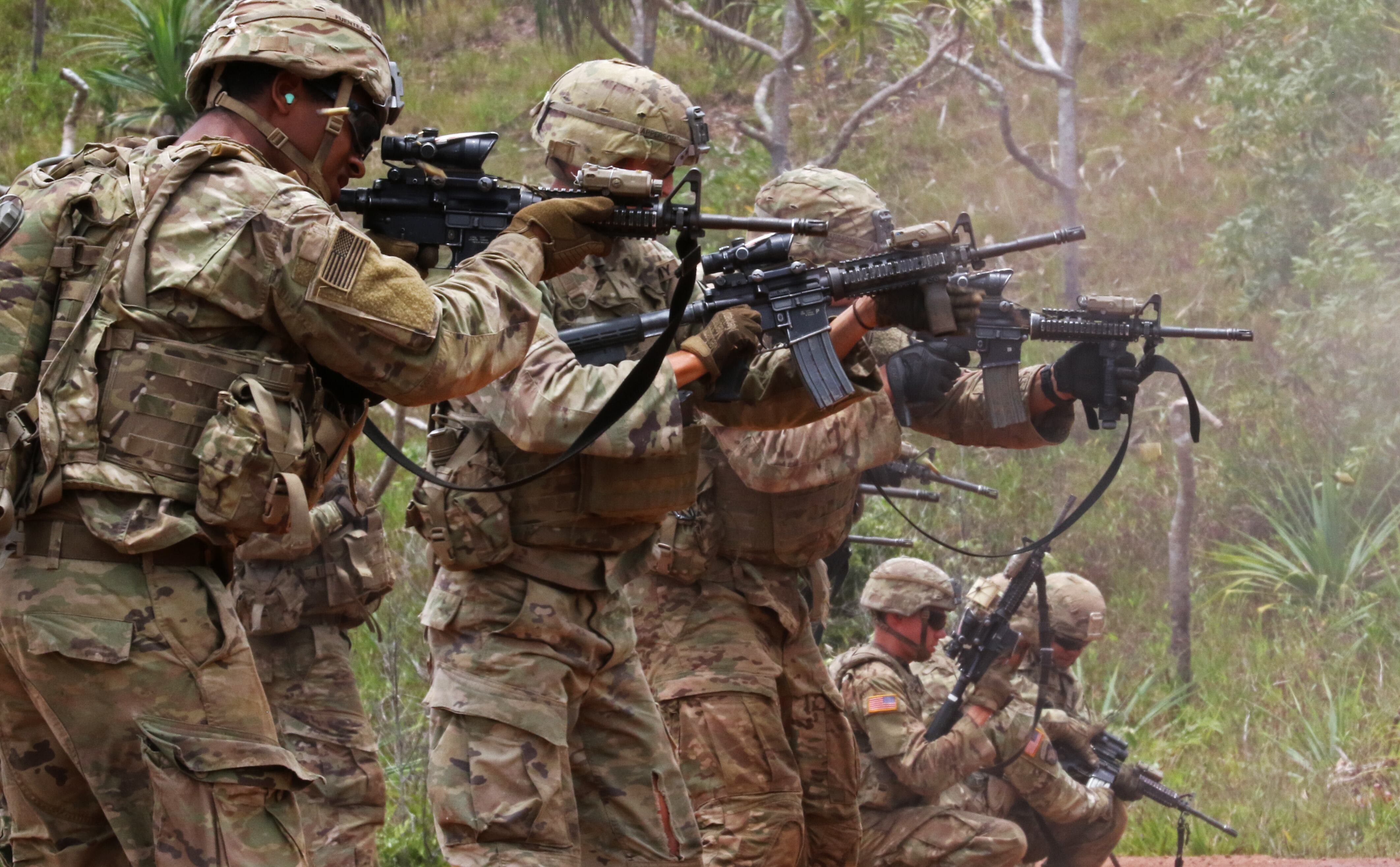A prototype device used recently at the Army’s premiere combat training center has soldiers using precision cyber techniques to target small drones that might have been missed with other equipment and methods.
Soldiers with the 3rd Brigade Combat Team, 1st Cavalry Division used the cyber precision drone detection system during a January rotation at the National Training Center.
The equipment allowed soldiers to get alerts of drone presence and ways to target it that helped protect the brigade, according to an Army release.
Capt. Christopher Packard said the prototype integrated with existing signal, intelligence and electronic warfare capabilities.
RELATED

Five soldiers embedded with the opposing force to attack the brigade with enemy drones for more realistic training, according to the release.
A group of software developers at the Army’s Cyber Command along with others at the Defense Digital Service built custom software and modified commercial equipment to make the early versions of the prototype last year.
“The (Rapid Capabilities and Critical Technologies Office) and Tobyhanna (Army Depot) helped out with taking it from an advanced prototype and turning it into an engineering design model,” said 1st Lt. Aneesh Patel, with ARCYBER's Cyber Solutions Development Detachment with the 782nd Military Intelligence Battalion, 780th Military Intelligence Brigade.
“We designed our own hardware and schematics, but what we didn’t have was the proper ability to scale, and I think that’s important in a bridging strategy and for any prototype.”
The system is an “interim solution,” according to the release.
“Being a newer system and a new tool for a maneuver unit, there are going to be a lot of things we don't know as [cyber] engineers, and a lot of their specific needs for the capability that may not have gotten through to us. So being out there was very important to this and any other project like it,” Patel said.
The system will be followed by an upgraded version slated for Special Operations Command for an operational assessment this summer.
Phase two will maximize the capability’s operational life span by adding software updates that improve performance, according to the release.
That type of equipment hits drones, but the Army also has its own cyber protection teams, such as the one featured in another release out of Grafenwoehr, Germany in June, where the 301st and 172nd CPTs used defensive measures for the Sabre Guardian 19 exercise.
The annual exercise is taking place this year in Bulgaria, Hungary and Romania, co-led by the Romanian Joint Force Command.
The teams “create chaos by accessing the network and either disabling it or stealing classified information and using it against the units involved in the exercise.”
Though cyber threats have been a talking point among commanders for years, it wasn’t until this most recent rotation that cyber threats were simulated for the exercise, said Capt. Joe McNerney, 301st CPT battle captain.
The captain explained that the CPTs simulate an insider threat.
The 172nd is a combination of soldiers and airmen from units based in Indiana, Michigan and Ohio. The 301st is an Air Force unit out of the Battle Creek Air National Guard Base, Michigan.
“They’re people we work with on a daily basis so we want to beat them," said Sgt. Brian Stevens, an information technology specialist from Detroit. “We have to make them feel pain at some level.”
Todd South has written about crime, courts, government and the military for multiple publications since 2004 and was named a 2014 Pulitzer finalist for a co-written project on witness intimidation. Todd is a Marine veteran of the Iraq War.





